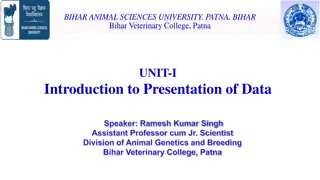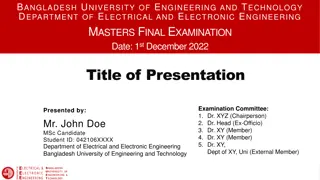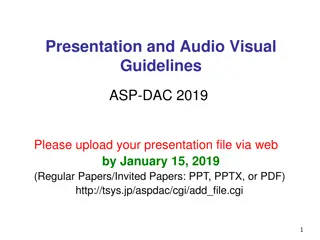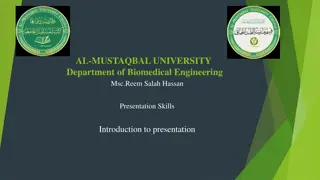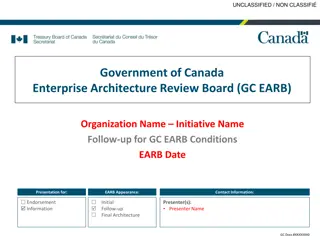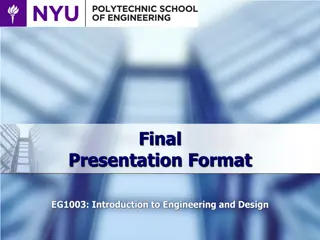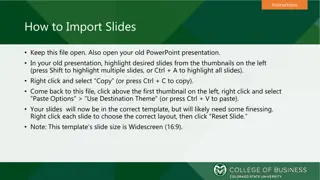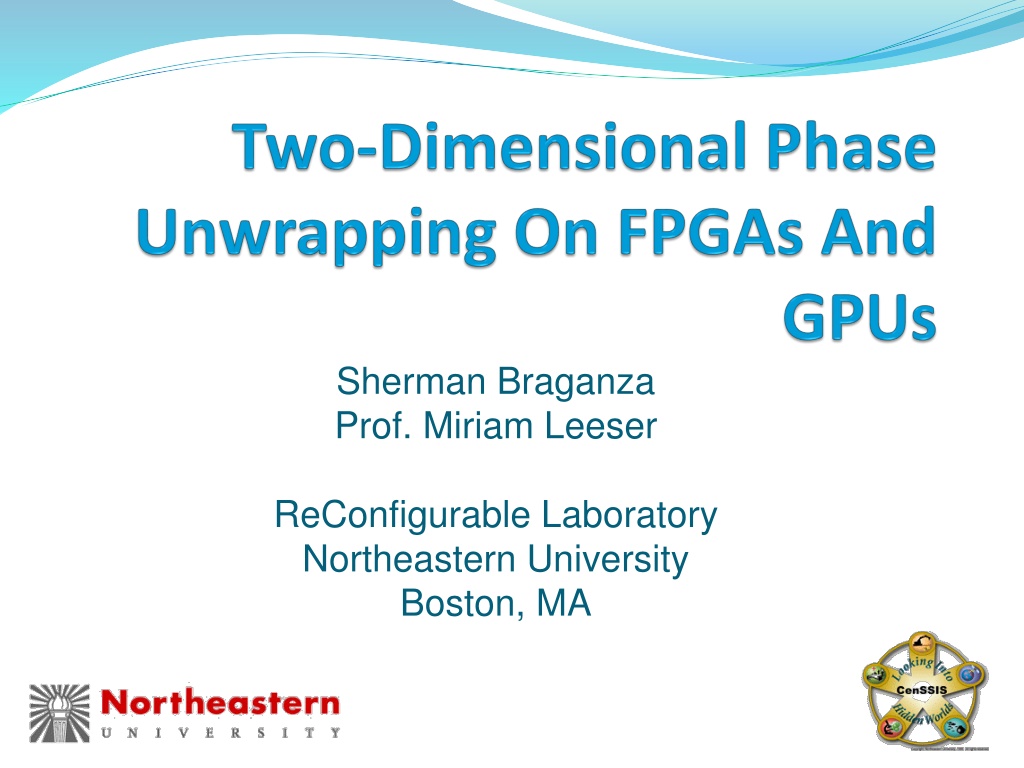
Advanced Phase Unwrapping Techniques in Optical Quadrature Microscopy
Explore the innovation of phase unwrapping in optical quadrature microscopy, detailing motivation, algorithms, platforms, and implementation specifics with FPGA and GPU technology for high-quality results in phase-based imaging applications.
Download Presentation

Please find below an Image/Link to download the presentation.
The content on the website is provided AS IS for your information and personal use only. It may not be sold, licensed, or shared on other websites without obtaining consent from the author. Download presentation by click this link. If you encounter any issues during the download, it is possible that the publisher has removed the file from their server.
E N D
Presentation Transcript
Sherman Braganza Prof. Miriam Leeser ReConfigurable Laboratory Northeastern University Boston, MA
Outline Introduction Motivation Optical Quadrature Microscopy Phase unwrapping Algorithms Minimum LPnorm phase unwrapping Platforms Reconfigurable Hardware and Graphics Processors Implementation FPGA and GPU specifics Verification details Results Performance Power Cost Conclusions and Future Work
Motivation Why Bother With Phase Unwrapping? Used in phase based imaging applications IFSAR, OQM microscopy High quality results are computationally expensive Only difficult in 2D or higher Integrating gradients with noisy data Residues and path dependency Wrapped embryo image 0.1 0.3 0.1 0.3 -0.1 -0.3 -0.1 -0.2 No residues Residues
Algorithms Which One Do We Choose? Many phase unwrapping algorithms Goldstein s, Flynns, Quality maps, Mask Cuts, multi-grid, PCG, Minimum LP norm (Ghiglia and Pritt, Two Dimensional Phase Unwrapping , Wiley, NY, 1998. We need: High quality (performance is secondary) Abilitity to handle noisy data Choose Minimum LP Norm algorithm: Has the highest computational cost a) Software embryo unwrap Using matlab unwrap b) Software embryo unwrap Using Minimum LP Norm
Breaking Down Minimum LP Norm Minimizes existence of differences between measured data and calculated data Iterates Preconditioned Conjugate Gradient (PCG) 94% of total computation time Also iterative Two steps to PCG Preconditioner (2D DCT, Poisson calculation and 2D IDCT) Conjugate Gradient
Platforms Which Accelerator Is Best For Phase Unwrapping? FPGAs Fine grained control Highly parallel Limited program memory Floating point? High implementation cost Xilinx Virtex II Pro architecture http://www.xilinx.com/
Platforms - GPUs GPUs Data parallel architecture Less flexibility Floating point Large program memory Inter processor communication? Lower implementation cost Limited # of execution units G80 Architecture [nvidia.com/cuda]
Platform Comparison FPGAs GPUs Absolute control: Can specific custom bit-widths/architectures to optimally suit application Can have fast processor-processor communication Need to fit application to architecture Multiprocessor-multiprocessor communication is slow Low clock frequency Higher frequency High degree of implementation freedom => higher implementation effort. VHDL. Small program space. High reprogramming time Relatively straightforward to develop for. Uses standard C syntax Relatively large program space. Low reprogramming time.
Platform Description FPGA and GPU on different platforms 4 years apart Effects of Moore s Law Platform specifications Machine 3 in the Results: Cost section has a Virtex 5 and two Core2Quads Software unwrap execution time
Implementation: Preconditioning On An FPGA Need to account for bitwidth Minimum of 28 bit needed Use 24 bit + block exponent Implement a 2D 1024x512 DCT/IDCT using 1D row/column decomposition Implement a streaming floating point kernel to solve discretized Poisson equation 27 bit software unwrap 28 bit software unwrap
Minimum LP Norm On A GPU NVIDIA provides 2D FFT kernel Use to compute 2D DCT Can use CUDA to implement floating point solver Few accuracy issues No area constraints on GPU Why not implement whole algorithm? Multiple kernels, each computing one CG or LP norm step One host to accelerator transfer per unwrap
Verifying Our Implementations Look at residue counts as algorithm progresses Less than 0.1% difference Visual inspection: Glass bead gives worst case results Software unwrap GPU unwrap FPGA unwrap
Verifying Our Implementations Differences between software and accelerated version GPU vs. Software FPGA vs. Software
Results: FPGA Implemented preconditioner in hardware and measured algorithm speedup Maximum speedup assuming zero preconditioning calculation time : 3.9x We get 2.35x on a V2P70, 3.69x on a V5 (projected)
Results: GPU Implemented entire LP norm kernel on GPU and measured algorithm speedup Speedups for all sections except disk IO 5.24x algorithm speedup. 6.86x without disk IO
Results: FPGAs vs. GPUs Preconditioning only Similar platform generation. Projected FPGA results. Includes FPGA data transfer, not GPU Buses? Currently use PCI-X for FPGA, PCI-E for GPU Data transfer Preconditioning Time Time (s) Computation 5 4.5 4 3.5 3 2.5 2 1.5 1 0.5 0 GPU FPGA 3 Core V5 (Projected)
Results: Power GPU power consumption increases significantly FPGA power decreases Power consumption (W)
Cost Machine 3 includes an AlphaData board with a Xilinx Virtex 5 FPGA platform and two Core2Quads Performance is given by 1/Texec Proportional to FLOPs Machine 2 Machine 3 $2200 $10000 Performance/Cost ratio Performance/Cost ratio 4.00 3.50 3.00 2.50 2.00 1.50 1.00 0.50 0.00 Machine 2 (GPU) Machine 3 (V5 FPGA)
Performance To Watt-Dollars Metric to include all parameters Performance/(Cost, Power) 0.06 0.05 0.04 0.03 0.02 0.01 0.00 Machine 2 (GPU) Machine 3 (V5 FPGA)
Conclusions And Future Work For phase unwrapping GPUs provide higher performance Higher power consumption FPGAs have low power consumption High reprogramming time OQM: GPUs are the best fit. Cost effective and faster: Images already on processor FPGAs have a much stronger appeal in the embedded domain Future Work Experiment with new GPUs (GTX 280) and platforms (Cell, Larrabee, 4x2 multicore) Multi-FPGA implementation
Thank You! Any Questions? Sherman Braganza (braganza.s@neu.edu) Miriam Leeser (mel@coe.neu.edu) Northeastern University ReConfigurable Laboratory http://www.ece.neu.edu/groups/rcl




